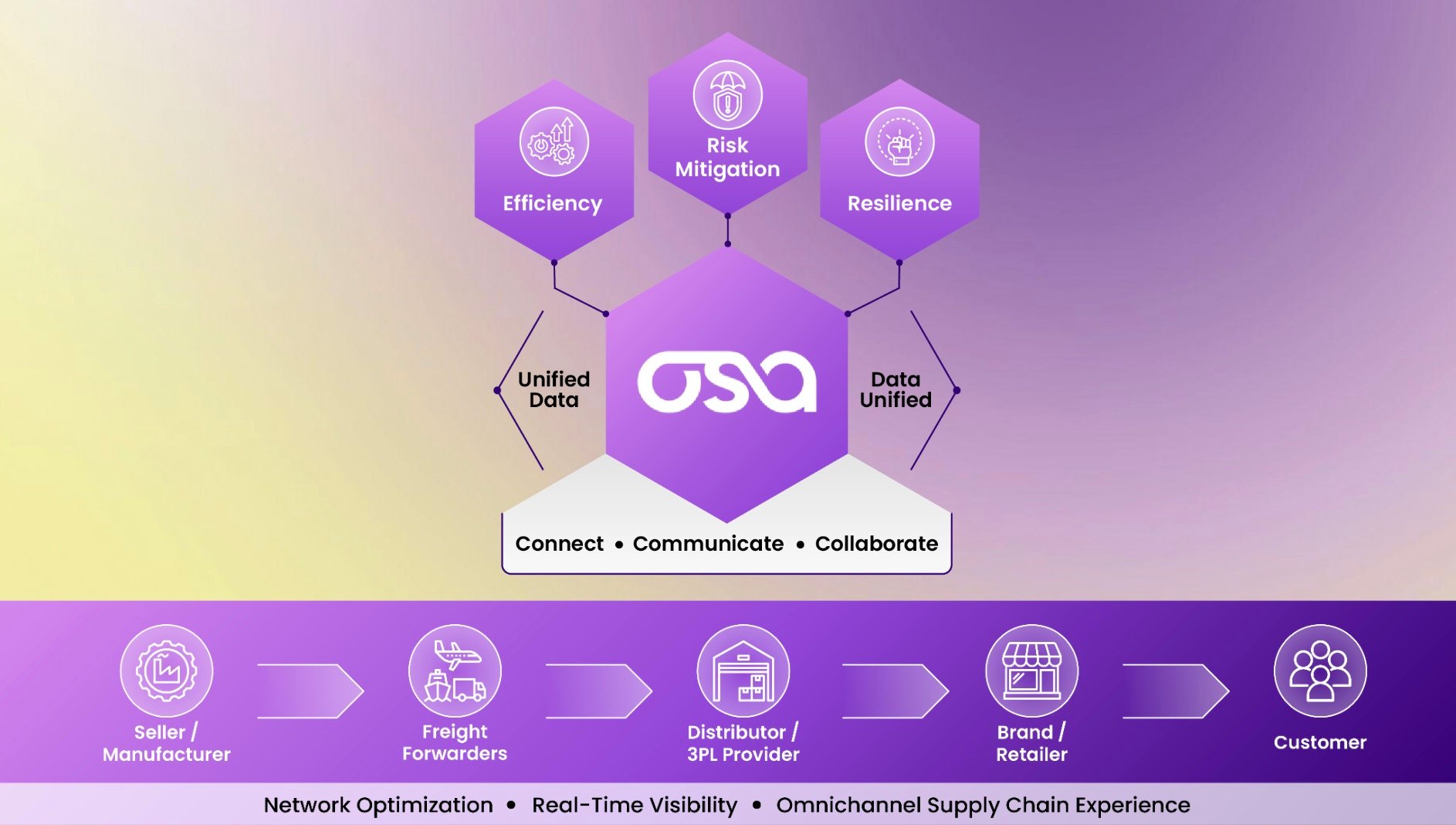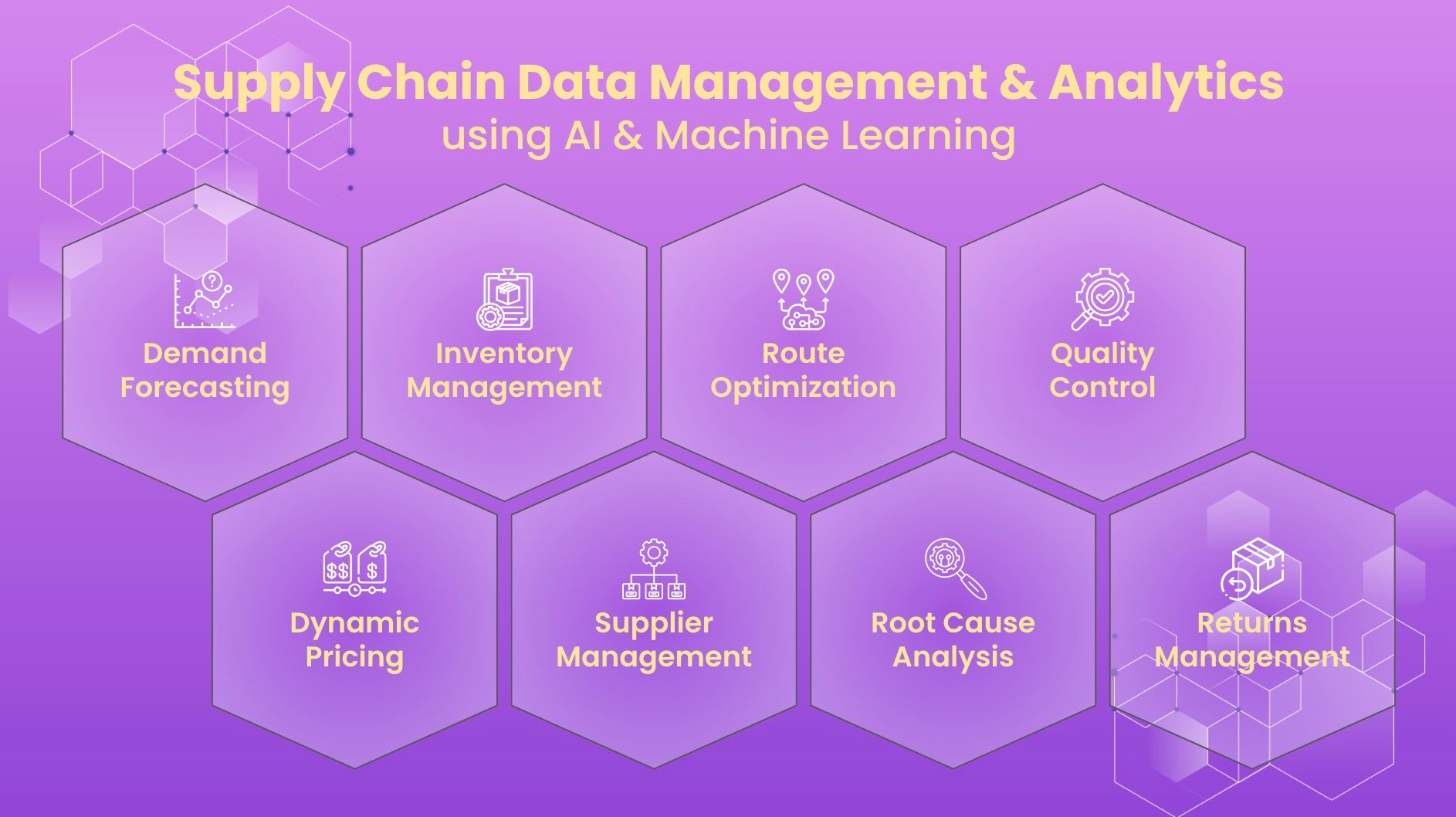
Embarking on the journey of implementing a Warehouse Management System (WMS) is a strategic move for any business aiming to enhance its supply chain efficiency. Supply chain technology is crucial for those looking to remain nimble, easily scale and grow revenue. WMS solutions also help reduce risks, increase visibility, and enhance operations—not just third-party logistics (3PL) warehouses—but also brands and retailers who work closely with their warehouse partners.
The decision to move forward with a cloud-based WMS involves more than just the initial investment. It is important to understand the various facets that contribute to the total cost of ownership (TCO) and ultimate return on investment (ROI).
Below, Osa Commerce will explore and share the benefits of adopting innovative supply chain solutions and the impacts these technologies have on your business. More importantly, we will share why a WMS alone is not enough to move the needle when looking at remaining competitive in today’s logistics marketplace.
.jpg?width=1200&height=627&name=Orange%20Minimalist%20Aesthetic%20Search%20Bar%20Question%20Instagram%20Post%20(LinkedIn%20Single%20Image%20Ad).jpg)
Initial WMS Investment
The inception of a WMS journey starts with the initial investment. While it might seem like a significant financial commitment upfront, it lays the groundwork for future operational excellence.
Starting with a WMS that best fits your immediate needs is like planting the seeds of efficiency. It's an essential element that paves the way for streamlined processes and optimized warehouse operations. By making a well-informed initial investment, businesses set the stage for long-term success in supply chain management. One key element when looking at making a successful investment is to see what the future of the industry is looking like. The good news is that we’ve already gone ahead and done the research for you, check out our 2024 Supply Chain Predictions Report.

But is a WMS enough?
A WMS is only one part of the equation. 3PLs and brands looking to create the optimal omnichannel fulfillment experience will require technology that offers complete and collaborative visibility. From unified commerce capabilities, order and inventory management, to final mile delivery, 3PLs and 4PLs must have the ability to meet the complex demands of e-commerce fulfillment.
Simply put, a WMS is just not enough.
Integration and Customization Requirements
The adaptability of a WMS working with existing systems and the ability to customize it to specific business processes is crucial. Integration and customizations greatly influence operational workflows, data synchronization, and process automation to determine the flexibility of the system and if it can cater to unique logistics requirements.
Utilizing a tech-agnostic WMS that can easily integrate with any other supply chain management technology will offer seamless supply chain optimization much like a tailored solution. This significantly enhances operational efficiency, contributing positively to the overall cost of ownership.
Why is it important to have a tech-agnostic WMS?
For example, Osa offers its clients 440+ preset supply chain integrations, allowing you to immediately plug and play. This covers your supply chain from top to bottom, not solely focusing on just aWMS. When looking to update WMS systems, it is important to understand just how warehouse management software integrates holistically with your current system to ensure complete personalization throughout the process. The Osa Collaborative Visibility Platform helps remove the worry of “just having a WMS.” It offers reliable and transparent solutions for not only WMS but also integrations, unified commerce, order management, and more powered by cutting edge AI-driven technology. Integrating your entire supply chain has never been easier with all of your systems in one place, including your WMS, so you can see the connectivity throughout your entire supply chain and stay one step ahead with just one stop!
.jpg?width=1200&height=1200&name=images%20ideas%20(2).jpg)
Training and User Adoption
Implementing a WMS introduces the need for successful training and user adoption. Training users to operate the system effectively and ensuring widespread adoption is a key factor in the cost equation.
Investing in comprehensive training programs ensures a smooth transition and widespread acceptance of the WMS. Training and user adoption should be main focal points during an implementation. In cases. Training can incur costs. However, the result is a workforce proficient in utilizing the system ultimately contributing to the long-term success of the WMS and justifying the associated expenses.
Why does change management matter?
A large factor of this successful transition is effective change management, when adjusting anything in the supply chain there is a natural learning curve. The implementation of Osa Commerce technology into your supply chain comes with a simple and easy user experience, making this a smooth transition to leveling up your operations. With the implementation of the Collaborative Visibility Platform, which includes an advanced WMS, into the logistics system your team only needs to know how to navigate and operate one system, leading to a successful change management.
Seasonal fluctuations impact 3PL operations, posing challenges in warehouse manpower. With frequent workforce changes, the key is a user-friendly platform and an easily implementable WMS, eliminating the need for extensive training each time.
Maintenance and Support
Once implemented, WMS software requires ongoing maintenance and support. This is where cloud-based software becomes integral. Regular updates, bug fixes, and technical assistance contribute to the overall TCO—and SaaS options offer the best ROI limiting costs. The payoff lies in a system that evolves with the ever-changing demands of the supply chain so businesses can scale and grow easily without the worry of having to rip and replace outdated technology.
Why is it important to invest in a WMS?
Investing in technology to improve and enhance operations is essential to ensuring the longevity of your business. While it may incur ongoing expenses, the result is a well-maintained and reliable system that adapts to dynamic business needs, making it an essential and worthwhile investment and contribution to the total cost of ownership.
Operational Efficiency Gains
One of the most critical factors influencing the ownership cost is the operational efficiency gains achieved through the implementation of a WMS. The system's ability to streamline processes, reduce errors, and enhance overall efficiency directly impacts the return on investment positively.
While the initial investment and ongoing costs are essential considerations, the ultimate goal is to achieve operational efficiency gains that far outweigh the incurred expenses. A well-optimized supply chain, improved accuracy, and enhanced efficiency contribute significantly to the overall positive impact on cost.
How does technology improve supply chain efficiency?
Adding onto the great operational benefits of visibility, traceability, and accuracy comes the role of AI and Machine Learning in a supply chain. In fact, with AI an employee’s efficiency and performance can improve by 40%. With this technology Osa is able to provide accurate inventory forecasting, demand forecasting, automation, and most effective workflows.

Scalability Costs
Business landscapes evolve, and a WMS must be scalable to adapt to changing needs. Scalability costs encompass the expenses associated with expanding or upgrading the system to accommodate growth.
The ability of a WMS to scale with business growth is a key determinant of its long-term value. While scalability costs are part of the equation, the flexibility gained in accommodating business expansion contributes positively to the total cost of ownership.
How can I scale a supply chain affordably?
The good news is that Osa Commerce has built logistics solutions so you don’t need to worry about the cost of scaling. When scaling one of the crucial pieces is the need to integrate your supply chain. With the Collaborative Visibility Platform it is already anticipated that scaling and additional integration are the future and the system is already equipped to accommodate these needs whenever you want or need them. At the snap of your fingers you can access hundreds of preset integrations or create personalized ones as needed.
Downtime Costs
Downtime, the enemy of efficiency, can incur significant costs. Whether due to system maintenance, updates, or unexpected issues, understanding and mitigating downtime costs is essential in calculating the overall TCO.
Minimizing downtime through proactive measures and efficient maintenance procedures is crucial. While some downtime costs are inevitable, strategic planning can significantly reduce their impact.
How can I cut downtime costs in my WMS?
With the proper platform there should be minimal downtime costs. For example, with the Osa WMS solution you have a holistic view of your entire system allowing you to plan accordingly creating the least amount of waves possible. Another advantage is the access to AI within your system allowing you to leverage the knowledge and forecasting capabilities to your advantage when anticipating downtime.
Return on Investment (ROI)
At the heart of every investment is the expectation of a return on investment (ROI). Understanding how the benefits gained from a WMS outweigh the total costs incurred is the ultimate metric in evaluating its success. Studies show that when an effective WMS is implemented there is a 25% increase in productivity. When you consider a WMS that is part of a collaborative visibility platform, you can also achieve a 20% increase in revenue.
A positive ROI is the ultimate goal. While each factor contributes to the overall cost, the tangible and intangible benefits gained, including increased efficiency, accuracy, and customer satisfaction, form the basis for a successful and justified investment in a WMS.
What is a good ROI for a WMS?
While each company has a different set of ROI goals, Osa specializes in tailoring solutions to meet specific business needs, ensuring a customized plan for optimal ROI achievement. However, our platform involved ROI not just on a WMS—but also order management, fulfillment optimization, integrations, last mile, and unified commerce for brand and retailers.
Benefits of an Advanced Osa WMS
%20(1).jpg?width=1200&height=627&name=Orange%20Minimalist%20Aesthetic%20Search%20Bar%20Question%20Instagram%20Post%20(LinkedIn%20Single%20Image%20Ad)%20(1).jpg)
Osa provides your business top-tier supply chain technology, exemplified by our Warehouse Management System, a comprehensive platform designed to overcome current challenges in supply chains. Our software solution surpasses conventional WMS capabilities, offering a tailored approach.
Key benefits include:
- Enhanced Efficiency: Focused on optimized efficiency, the Osa WMS reduces shipping times and improves inventory accuracy through a user-friendly interface, achieving speeds up to four times faster than traditional WMS.
- Reporting Analytics: Powered by real-time data the dashboards and reporting tools allow you to fully customize the way your business needs to see the data, allowing for full supply chain visibility.
- Automated Orders: Our upgraded WMS excels in order automation, utilizing online shopping carts and API technology to streamline product movement through the supply chain.
- Cloud-Based WMS: Not only do you not need to be glued to the desktop but you also don’t have to worry about losing any data. With your entire WMS being cloud-based this enables you to track every item in any of your warehouses from wherever you are!
- Streamlined Parcel Management: Osa provides advanced parcel management, from order processing to distribution. Collaborating with parcel carriers ensures safe delivery, while quick label generation keeps packages organized throughout the entire process.
- Easy Integration: Our system seamlessly integrates with existing software, allowing effortless combination with robotics or automation systems to create a comprehensive solution tailored to your business.
In essence, our WMS not only addresses the limitations and costs of standard systems but also provides a robust solution that transforms and optimizes supply chain operations.
Navigating the financial landscape of implementing a Warehouse Management System involves a comprehensive understanding of the total cost of ownership. Each factor, from the initial investment to the return on investment, plays a pivotal role in shaping the financial equation. Businesses that strategically evaluate and manage these factors are better equipped to unlock the full potential of their WMS, fostering long-term success in an ever-evolving supply chain environment.
When looking into a Warehouse Management System check out the Osa Commerce Collaborative Visibility Platform and technology solutions and see how we can save you money, elevate your supply chain as a whole, and increase your logistics success. Book a demo!



.jpg?width=2240&height=1260&name=Neutral%20and%20Orange%20Minimal%20Lead%20Magnet%20Opt%20in%20CTA%20Phone%20Mockup%20Blog%20Banner%20(1).jpg)